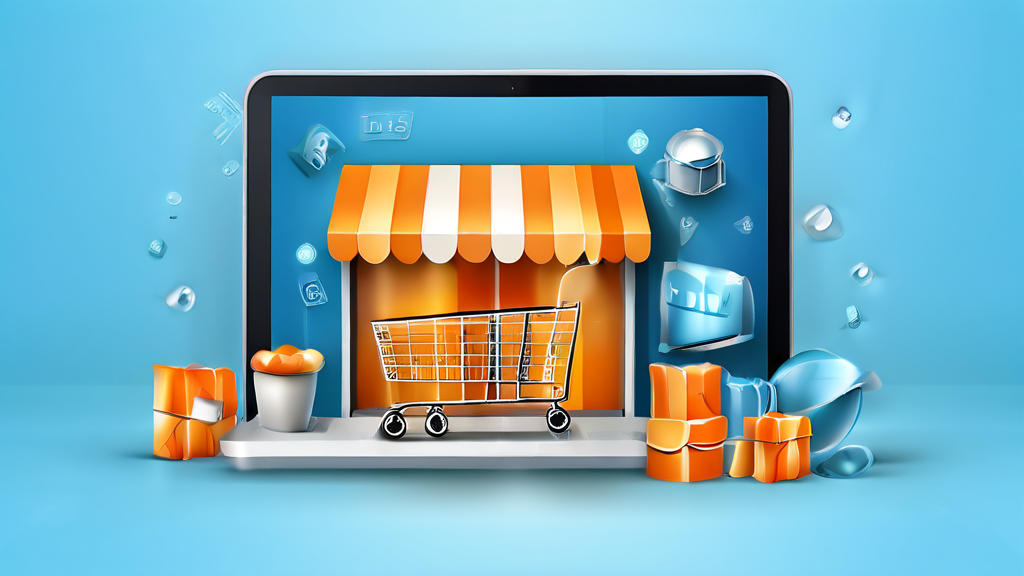Optimizing the Omnichannel E-commerce Experience
Optimizing the Customer Journey Across Channels
In today’s digital landscape, providing a seamless omnichannel e-commerce experience has become essential for businesses looking to stay ahead of the competition. Consumers now expect a cohesive and integrated shopping journey that allows them to move freely between online and offline touchpoints, with a consistent brand experience at every interaction. By optimizing the omnichannel experience, businesses can enhance customer satisfaction, drive loyalty, and ultimately, boost sales.
Unify Customer Data Across Channels
The foundation of a successful omnichannel strategy lies in data integration. Businesses must have a comprehensive view of their customers, including their browsing history, purchase behavior, and preferences across all channels. By unifying customer data, companies can gain valuable insights that inform personalized marketing, targeted product recommendations, and a more tailored shopping experience. Tools like customer relationship management (CRM) systems and data analytics platforms can help consolidate and analyze customer information, enabling a 360-degree understanding of each individual.
Optimize the Website for Seamless Navigation
The e-commerce website serves as the cornerstone of the omnichannel experience. Ensuring a user-friendly, intuitive, and responsive website design is crucial. Customers should be able to easily navigate through product categories, search for specific items, and complete the checkout process with minimal friction. Implementing features like a clean and organized product catalog, streamlined checkout flow, and mobile-friendly layout can greatly enhance the online shopping experience.
Integrate In-store and Online Experiences
In the era of blended retail, it’s essential to bridge the gap between physical and digital channels. By integrating in-store and online experiences, businesses can provide customers with a cohesive brand journey. This can include features like buy online, pick up in-store (BOPIS), in-store kiosks that allow customers to browse and order products, and the ability to return online purchases at brick-and-mortar locations. Seamless integration across channels not only improves convenience for customers but also allows businesses to capture valuable data and insights.
Leverage Personalization and Targeted Communication
Personalization is a powerful tool in the omnichannel e-commerce toolkit. By leveraging customer data, businesses can deliver tailored product recommendations, personalized marketing messages, and customized offers across multiple channels. This level of personalization not only enhances the customer experience but also drives increased engagement and sales. Additionally, businesses should implement targeted communication strategies, such as abandoned cart emails, post-purchase follow-ups, and personalized loyalty programs, to nurture customer relationships and foster loyalty.
Streamline the Order Fulfillment Process
Efficient order fulfillment is crucial for maintaining a seamless omnichannel experience. Businesses should implement robust inventory management systems, coordinated shipping and logistics, and flexible fulfillment options such as BOPIS, curbside pickup, and same-day delivery. By optimizing the fulfillment process, businesses can ensure timely and accurate order delivery, which is a key driver of customer satisfaction and repeat business.
Continuous Optimization and Feedback Loops
Delivering a superior omnichannel e-commerce experience is an ongoing process that requires continuous optimization and adaptation. Businesses should regularly monitor customer behavior, analyze performance metrics, and gather feedback to identify areas for improvement. This may include A/B testing different website layouts, analyzing customer pain points, and incorporating user feedback to refine the overall experience. By embracing a culture of continuous improvement, businesses can stay ahead of evolving customer expectations and maintain a competitive edge in the dynamic e-commerce landscape.
Creating a seamless omnichannel e-commerce experience is essential for businesses looking to thrive in the digital age. By unifying customer data, optimizing the website, integrating physical and digital channels, leveraging personalization, streamlining fulfillment, and continuously improving, businesses can deliver a truly exceptional shopping journey that fosters customer loyalty and drives long-term success.
Seamless Integration of Online and Offline Touchpoints
Optimizing the Omnichannel Customer Experience
In today’s dynamic retail landscape, providing a seamless integration of online and offline touchpoints has become imperative for businesses to stay competitive. Customers now expect a consistent, personalized experience regardless of the channel they choose to engage with your brand. Achieving this level of cohesion across all platforms requires a strategic, customer-centric approach.
Bridging the Online-Offline Divide
The key to creating a seamless omnichannel experience lies in breaking down the traditional silos between your digital and physical channels. This means ensuring that your customers can fluidly move between your website, mobile app, and brick-and-mortar stores without experiencing any disconnect in the overall brand experience.
One effective way to achieve this is by leveraging technologies like beacons, QR codes, and augmented reality to bridge the gap between online and offline interactions. For example, you could use beacons to trigger personalized push notifications on a customer’s mobile device as they enter your store, guiding them to relevant products or special offers. Alternatively, you could integrate QR codes that allow customers to access additional product information or make purchases directly from their smartphones while in-store.
Personalization and Contextual Relevance
Alongside technological integration, a critical aspect of seamless omnichannel experiences is providing personalized and contextually relevant interactions. By collecting and analyzing customer data across all touchpoints, you can gain a deeper understanding of their preferences, behaviors, and pain points. This intelligence can then be used to tailor the customer journey, ensuring that each interaction is meaningful and valuable to the individual.
For example, you could leverage predictive analytics to recommend products or services based on a customer’s browsing history and purchase patterns. Similarly, you could use location-based data to deliver timely, location-specific offers and promotions as customers move between online and offline channels.
Consistent Branding and Communication
Maintaining a consistent brand identity and communication across all touchpoints is also essential for creating a cohesive omnichannel experience. This means ensuring that your visual branding, messaging, and tone of voice are aligned, regardless of whether a customer is interacting with your website, mobile app, or in-store staff.
Consistency also extends to the overall customer service experience. Customers should receive the same level of attentive, knowledgeable support whether they’re reaching out via live chat, social media, or in person. Enabling seamless information sharing and collaboration between your online and offline teams can help ensure a consistent, high-quality customer experience.
Continuous Optimization and Feedback
Achieving a truly seamless omnichannel experience is an ongoing process that requires continuous optimization and feedback. Regularly gather customer insights, monitor key performance indicators, and make adjustments to your strategies and technologies as needed. This agile, data-driven approach will help you stay ahead of evolving customer expectations and maintain a competitive edge in the market.
By focusing on the integration of online and offline touchpoints, personalization, consistent branding, and continuous optimization, businesses can create a seamless omnichannel customer experience that drives loyalty, engagement, and long-term growth. As the retail landscape continues to evolve, this holistic, customer-centric approach will be essential for success in the years to come.
Conclusion
Creating a seamless omnichannel e-commerce experience is no longer a luxury, but a necessity for businesses looking to stay competitive in today’s digital landscape. By optimizing the customer journey across online and offline touchpoints, brands can build stronger relationships, drive increased loyalty, and ultimately, boost sales.
At the heart of an effective omnichannel strategy lies the seamless integration of various sales channels, ensuring a consistent and personalized experience for customers regardless of how they choose to engage with the brand. This means aligning product information, inventory, pricing, and promotions across all platforms, from the website and mobile app to physical retail locations and social media.
Equally important is the ability to gather and leverage customer data to deliver a truly customized experience. By leveraging advanced analytics and personalization techniques, businesses can tailor product recommendations, targeted promotions, and even in-store interactions to the unique needs and preferences of each individual shopper.
The benefits of a well-executed omnichannel strategy are manifold. Not only does it enhance customer satisfaction and loyalty, but it also drives increased sales, as customers are empowered to seamlessly move between channels and complete transactions in the most convenient manner. Moreover, by breaking down silos between online and offline operations, businesses can gain valuable insights into their customers’ behavior and adjust their strategies accordingly.
As the e-commerce landscape continues to evolve, the ability to create a cohesive, cross-channel experience will be the key differentiator for businesses seeking to stay ahead of the competition. By investing in the necessary technologies, data capabilities, and organizational alignment, brands can unlock new opportunities for growth and ensure that their customers remain engaged, loyal, and satisfied.



